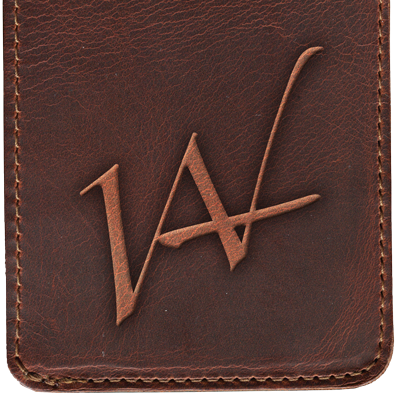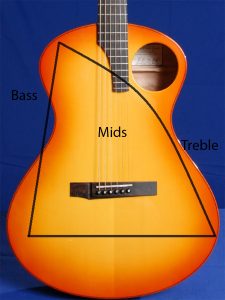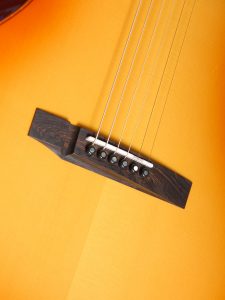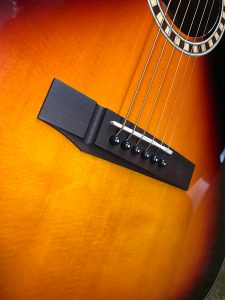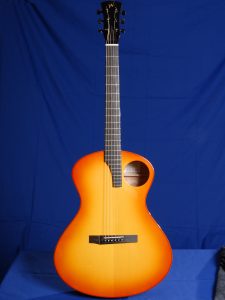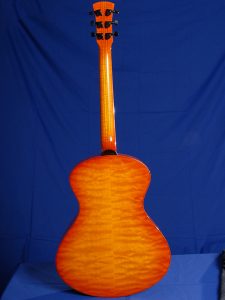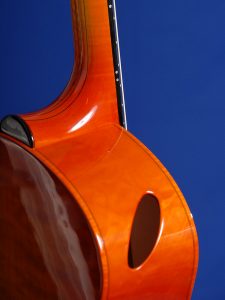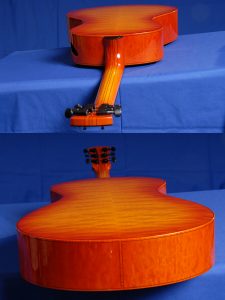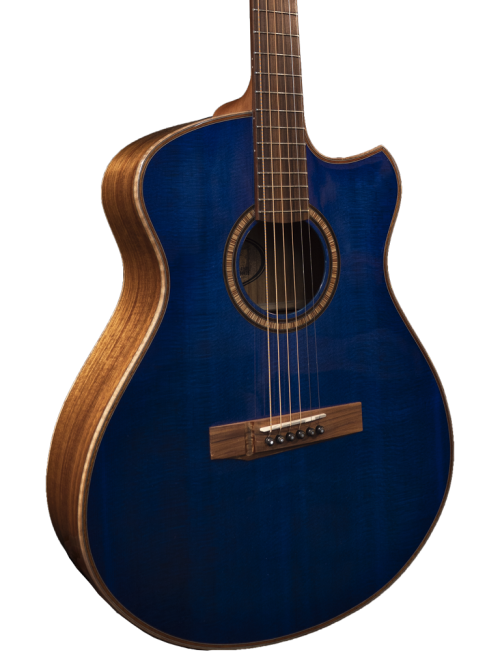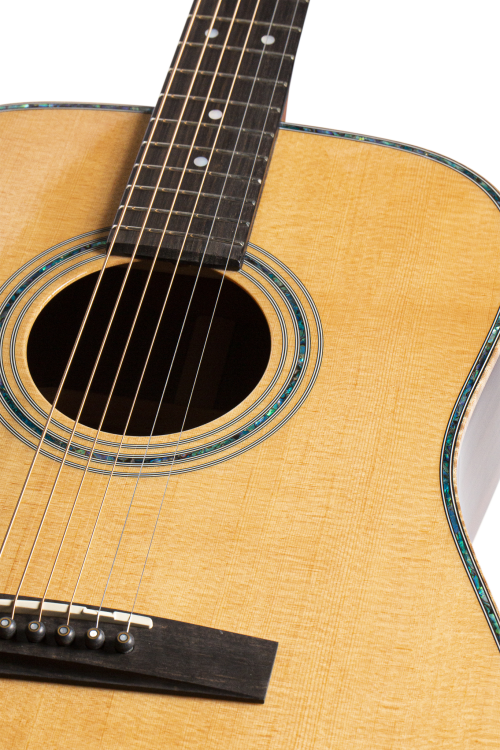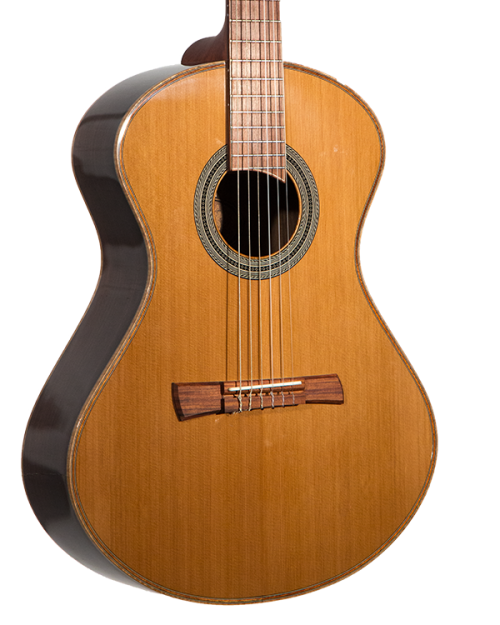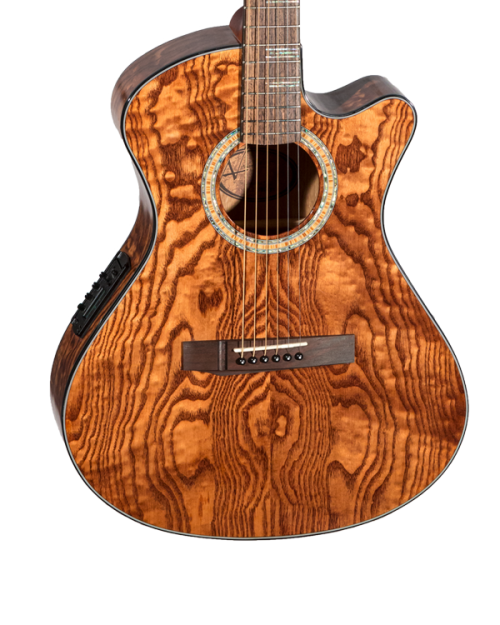Sunburst Model E: What’s with the offset sound hole and asymmetrical bridge?
How’s it going this week? Thanks for stopping by!
So let’s look into this Model E. I see three things note worthy here. I see the obvious offset sound hole, side sound hole, and the subtle evolution of the Andrew White Guitars asymmetrical bridge.
Lets talk about the sound holes first:
– The side sound hole is the easiest thing to explain. What your audience hears is different from what you hear. Take your guitar and strum it. Listen. Now strum the guitar and face it towards you. They sound drastically different, right? The side sound hole allows you to hear the a closer representation of what your audience hears. It allows your playing to become more nuanced. You hear your pick or finger attack. You hear your fret board attack. It’s simply an organic monitor.
-The offset sound hole is a little more complex. The idea is that we use the sound hole placement to create a kind of an EQ. That is to say the offset placement leaves the soundboard longest on the bass side, and shortest on the treble side. It also leaves the medium length section of the soundboard uninterrupted there by allowing for a strong mid range response.
What we end up with is a soundboard optimized for a variety of resonant frequencies.
Finally. The bridge! This is the version of the bridge design that moved forward into our Production Series. Notice the asymmetry and the relief on the bass side of the bridge. This is almost spec for spec the final bridge. Again we’re optimizing how we transfer string energy to the sound board and there by optimizing the range of resonance in the whole guitar. Check out the similarity in the bridges from the Signature Series Model E to the Production Series Eos 102 3TS.
I hope this was informative and modestly entertaining.
Talk to you next week!
Andrew
